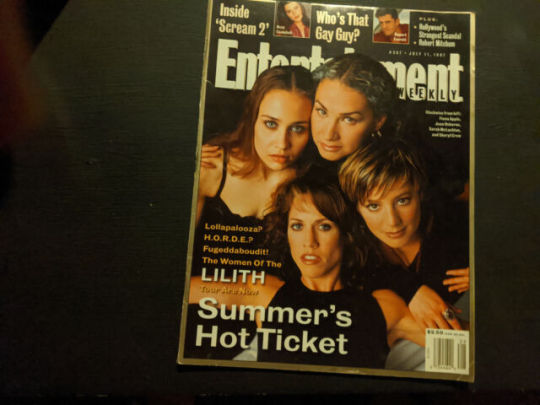#mitzvot
Explore tagged Tumblr posts
Note
it's not doing a mitzvah to donate to gofundme scams. anyone can claim to be vetted, and anyone can claim to be a vetting blog. stick to official organizations like anera that guarantee aid goes to civilians, not stolen by scam farms or terrorist groups. don't allow yourself or others to be taken advantage of.
Deutoronomy 15- 'If, however, there is a needy person among you, one of your kin in any of your settlements in the land that Hashem is giving you, do not harden your heart and shut your hand against your needy kin.'
Matnot Aniyim 7- "Anyone who sees a poor person asking and turns his eyes away from him and does not give him charity transgresses a negative commandment, as Deuteronomy 15:7 states: "Do not harden your heart or close your hand against your brother, the poor person. When a poor person whose identity is unknown says: "I am hungry, provide me with food," we do not investigate whether he is a deceiver. Instead, we provide him with sustenance immediately."
TimothyWinters 1: I would a hundred times rather run the risk of maybe, possibly, giving money to someone who doesn't actually need it, than refusing to give money to someone who is in need of charity.
That said, anon, if you are concerned, here are some charities you can donate to!
MAG International, which clears landmines from places affected by conflict.
Gaza Soup Kitchen
Save the Children
UNICEF
It will be Purim soon, when we have an obligation to give to the needy- I hope you'll consider one of these charities! Thank you for inspiring me to give tzedaka in your honour, anon.
33 notes
·
View notes
Text

rabbi_david_schlusselberg
We all feel so connected to the Bibas family and are in mourning with Yarden and the extended Bibas family. So many of us feel helpless, and wish we could do something. The greatest thing you can do for Shiri, Ariel, and Kfir, is to do mitzvot in their memory. It is the ultimate good that can be done for their soul in the eternal world.
48 notes
·
View notes
Text






In the kingdom of Persia, the biblical scripture of “The Scroll of Esther” sparks the story of Queen Esther and her Uncle Mordechi—a legendary fairy tale of grace, faith, and courageous tribalhood leadership, a timeless legacy that echoes into the heart beats of those who choose to be believers.
Haddasah Esther, who glowed with pure light and grace, has been given a role fulfill by God. Chosen by the hand of the Almighty, she rose to a position of great influence and honor and served a purpose far greater than imagined. Her spirit was touched by humbleness and true humility that seeked to worship God, honor faithfulness and look out for the salvation of a tribe.
Esther’s courage and brave leadership marked deliverance. In times of desperation, she sought the Lord, unifying her people and tribe to unite spiritually by fasting and praying, asking for God's redemption from annihilation and the darkness of evil. Mordecai’s words spoke an immortal message, “Who knows whether you have come to the kingdom for such a time as this?” Within these words is not only a call to action, but also a declaration of faith in God’s divine plan and loyalty.
True believers are servants first: Servants of God, and servants of the people's welfare. Let this biblical Megillah’s majestic frequency radiate hope and faith into our hearts and souls to serve God who shatters us in trials that seek to overcome us. May we stand strong and firm in faith, walk in the light of Esther’s and Mordechai’s glorious heritage and the Lord’s unrelenting providence.
The Scroll of Esther, or Megillat Esther in Hebrew, is one of the five scrolls in the Hebrew Bible and is a Mitzvah to listen to its reading during the holiday of Purim. The Megillah is read twice during the holiday, once on Purim eve, on14th of Adar, and again in the next morning on Purim holiday. It's read aloud in synagogues; it is customary for the congregation to use noisemakers to drown out Haman's name whenever it is mentioned. The entire scroll must be read from a kosher parchment scroll, with every word being heard by those in attendance.
In cities surrounded by walls that existed during the time of Joshua such as Jerusalem, Purim and the Megillah reading are observed one day later, on the 15th of Adar, in what is known as Shushan Purim.
#sacred#holiness#faith#prayers#judaism#jewish#megillah#queen esther#purimfestival#purimcarnival#purimparty#happy purim#purim#jewish joy#hebrew bible#bible scripture#bible#mitzvot#parchment paper#kosher#jewish holidays#believer
14 notes
·
View notes
Text
How do I find a part time job that lets me keep Shabbat no borax no glue
17 notes
·
View notes
Text

Today's inspiration yielded this wee bracha. Use it in good health.
Image description. A leafy green background with white lineart of ssuk repeated in the background. There are drawings of a shadowed almond blossom in top left, a gilded white California rose in top right, and a gilded tekhelet blue California rose on far left middle. Text os white serif with a black border. A heavier bordered larger text at top reads "a bracha for asking for and receiving help." Thinner bordered and slightly smaller text reads "blessed are You, Gd our god, Sovereign of Space Time, who invites us to help others fulfill the teachings of connection." Black text and logos at bottom give the handle @ the.pomegranate,witch for instagram, tumblr, and kofi, and Sahar Bareket for redbubble. Bottom right has the author's chop in red.
#art#queer art#jewish art#queer jewish art#mixed race artist#mixed race art#jewish#judaism#bracha#disabled#community#connection#mitzvah#mitzvot
3 notes
·
View notes
Text
More from Lilith Fair

"Foolish games" - Jewel
Lilith Fair was organised by Sarah McLachlan, always featured Suzanne Vega, but Jewel was the star attraction.
America's most charted single of the year was a double A-side - charming song "You were meant for me" was turned for its sad flip "Foolish games". Jewel Kilcher had broken through with debut album Pieces of You, and was the biggest thing in American pop.
youtube
Lilith Fair wasn't without its criticism. Sarah Vowell, the acerbic cultural critic, made a very fair point.
Lilith Fair isn't a picture of solidarity so much as a picture of uniformity. McLachlan, the event's organizer, has chosen singer-songwriters in her own image: pretty, polite, folksy moderates with sensible hair and more melody than message.
Future editions were less white, less acoustic; future years would show rock and rap, and Latin and R&B.

"Naked eye" - Luscious Jackson
Jill, Gabby, Kate, and Vivian were on the fringes of fame over here: given quarter-hearted approval by the fashion police because they were American and influenced by hip-hop beats and were women. In the error of Britpop, that's at least four capital offences.
"Naked eye" is about being emotionally vulnerable, honest about what you're feeling. Always reminds me of a sunny day with my favourite person of the time, as banks of snow melt into puddles.
youtube
"Sleep to dream" - Fiona Apple
Twenty-seven years before Chappell Roan, Fiona Apple wore a suit of armour onto the New York subway. Photographer Joe McNally explains.

"Fiona had always been shot as a waif – tendrils of hair blowing (dressed in lingerie), out in some sort of lily field. She told me she wanted to chuck that scene and be a warrior woman in a suit of armor. I was like 'Cool, babe, works for me!' We did the whole Camelot thing in a daylight studio. A big deal with hair, makeup, styling, painted backdrop, falling rose petals, fake blood on the sword, catering, crew, managers, hangers-on. Everything. All the while her manager is heating up about how late it’s getting. I was like, 'You brought her late, okay?' Finally he explodes and says 'Gotta go now and the subway is the only way' (it was rush hour in New York and she had a gig in Jersey, 'Get on the subway in the armor?' And she said, 'Yeah, that sounds about right!' I shout for a camera, wide lens, hot shoe flash, green and magenta gels and a bunch of 100 speed 35 chrome. We bolt and slip her through the turnstiles–sword and all–unnoticed, Subway came right away and I started ripping film like crazy for 5 stops. On the train, New Yorkers, true to form avoided eye contact. The studio shot went away and the subway shot (flash on camera, 1/15 of a second at F4, a hand held mess of a photograph) ran as the lead. You never know."
from the book "The Moment it Clicks" by Joe McNally
Performance from Conan O'Brien's show.
youtube
Bonus interview
"Your new cuckoo" - The Cardigans
First Band on the Moon had yielded an unexpected hit when Lovefool was included on a film soundtrack. What are these Swedes doing in the top ten, do they think they're Ace of Base?
For their next hit, the group released something more typical of their sound, bouncy and energetic and with a nice minor key lilt. But they didn't really promote it, being on dates in Lilith Fair at the time, so only a minor hit.
youtube
Lilith Fair was well-documented at the time, but much of the history was recorded digitally. All those ones and zeroes have become halves, and the memories are in danger of being lost. Television coverage and interviews with the performers were made at the time.
Later, there have been oral histories from the fans and performers points of view.
"Closer to fine (live)" - Indigo Girls
We learn that Emily and Amy, the core of the Indigo Girls, were the glue to bind the tour together. Knock on dressing room doors, open windows, get to know their co-stars.
The energy came out on stage, with lots of the acts joining in for a mass singalong near the end of the night. Here, for instance, are Sarah McLachlan, Jewel, Meredith Brooks, and others.
youtube
#my year in mix#1997#lilith fair#jewel#luscious jackson#fiona apple#the cardigans#indigo girls#women empowering women#female solidarity#mitzvot
4 notes
·
View notes
Text

how do we feel about my rough translation ?
9 notes
·
View notes
Text
Parashat Behar Bejukotay: Las Bendiciones de Dios. Rab. Natan Menashe en YouTube
youtube
#jumblr#torah#torah study#biblia#parasha ha shavua#shalom#torah portion#youtube#shabbat shalom#rab. menashe#weekly parasha#moshe rabenu#am israel jai#enjoy shabbat#spanish post#majon ora#midrasha#mitzvot#blessings#god's blessings
4 notes
·
View notes
Text
“The miracle of Chanukah teaches us that every person, regardless of their status, can be a light in the world. The darkness of exile can be transformed into light, and each individual’s actions can illuminate the world, just as the small flask of oil caused the menorah to burn for eight days. In this, we see that even the smallest effort on our part can result in something miraculous.”
The Rebbe: Rabbi Menachem Mendel Schneerson z”l
✨✨✨✨✨✨✨✨✨✨✨✨✨✨✨✨✨✨✨
Let’s light up our world with mitzvot & always look for G-d’s miracles






a hanukkiah bouquet . ݁₊᪥⋆. ݁
13K notes
·
View notes
Text

מוֹעֲדִים לְשִׂמְחָה חַגִּים וּזְמַנִּים לְשָׂשׂוֹן
וּלְקַחְתֶּם לָכֶם בַּיּוֹם הָרִאשׁוֹן, פְּרִי עֵץ הָדָר כַּפֹּת תְּמָרִים, וַעֲנַף עֵץ-עָבֹת, וְעַרְבֵי-נָחַל; וּשְׂמַחְתֶּם, לִפְנֵי יְהוָה אֱלֹהֵיכֶם–שִׁבְעַת יָמִים.
#happyholidays#holiness#prayers#holyland#jewish#faith#judaism#sukka#sukkot#sukkahphoto#sukkahmitzvah#sukkotfestival#sukkah#sacred#mitzvot#biblicalprayers#biblical roots#biblical#hebrew bible#bible scripture#bible verse#bible#holycityofjerusalema#sanctuary#temple#mount moriah#lulav and etrog#hebrewcalendar#hebrew#jewish history
15 notes
·
View notes
Text




Happiness is yellow
1 note
·
View note
Text
youtube
Unveiling Jewish Diversity: Beyond the Talmud #talmud #torah #diversity #israel #shortvideo
PLEASE 🙏🥺 RE BLOG MY POSTS AND THANKS.
#youtube#jerusalem#torah study#jew#logic#torah#jewish#israel#palestine terrorist#yeshua#diversity#talmud#hebrew bible#hebrew#mitzvot#ashkenazi#sephardic#artists on tumblr#photography#gaza strip#genocide#sects#denominaticn#religion#hamas is isis#hamas war crimes#israel hamas war#hamas#yemenite jews#ethiopian jews
1 note
·
View note
Text
Unveiling the Rich Tapestry of Judaism beliefs and practices
One of the oldest monotheistic religions in the world, Judaism, has a rich tapestry of doctrines and customs that have developed through thousands of years. Jewish Beliefs and Practices encompass a system of beliefs, practices, and rituals that have influenced Jewish people and communities throughout history. It is based on the covenant that God made with the Jewish people. In this investigation,…

View On WordPress
#Beliefs of Orthodox Judaism#Core beliefs of Judaism#Divine revelation#Jesus in Judaism#Jewish beliefs#Jewish heritage#Jewish spirituality#Jewish theology.#Jewish traditions#Judaism#Judaism and Jesus#Judaism practices#Judaism&039;s Beliefs About Jesus#Kashrut#Life after death beliefs#Life After Death Beliefs in Judaism#Mitzvot#Monotheism#Olam Ha-Ba#Orthodox Jewish customs#Orthodox Judaism#Religious identity#Resurrection#Shabbat#Shema#Tikkun olam#Torah
0 notes
Note
Shalom! Você que fez o pão? Tem receita? Eu nunca fiz queria tentar.
Shalom!. Este matzah es comprado en una tienda judaica aquí en Argentina. Pero si quieres hacerlo, tiene que ser con harina que no haya tenido NINGÚN contacto con agua.
1kg de harina común o de matzah(puedes comprarla)
600ml de agua
¡No lleva sal ni aceite!
Se puede cocinar en horno o plancha MUY caliente
Lo más importante: Desde que agregas el agua a la harina, lo mezclas, lo amasas(no tienes que dejar nunca de estirar la masa) y lo cocinas, tienen que pasar SÓLO hasta 18 minutos. Si pasan más minutos ya NO es kasher porque empieza a leudar la masa...Por eso donde lo cocines tiene que estar muy caliente.
Espero que te sirvan las instrucciones en español y puedas intentarlo. 🤗 JAG PESAJ SAMEAJ!!
#matzoth#matzah#jumblr#recipe#recipes#feliz pesaj#pesach#yom tov#matzoh#handmade matzos#matzah shimura#spanish post#español#mitzvot
4 notes
·
View notes
Text
It literally is! According to Rambam:
“For it is the principal object of the [Torah] and the axis round which it turns, to blot out these opinions from man’s heart and make the existence of idolatry impossible.
As regards the former Scripture says: “Lest your heart be persuaded,” etc. (Deut. 11:16), “whose heart turneth away to-day,” etc. (ibid. 29:17).
The actual abolition of idolatry is expressed in the following passage: “Ye shall destroy their altars, and burn their groves in fire” (Deut. 7:5), “and ye shall destroy their name,” etc. ([ibid. 12:3]).
These two things are frequently repeated; they form the principal and first object of the whole [Torah], as our Sages distinctly told us in their traditional explanation of the words “all that God commanded you by the hand of Moses” (Num. 15:25); for they say, “Hence we learn that those who follow idolatry deny as it were their adhesion to the whole [Torah], and those who reject idolatry follow as it were the whole [Torah].” ([Talmud, Kiddushin 40a 14]) Note it. ”
(Guide for the Perplexed, Part 3 29, trans. Friedlander, bracketed emendations mine)
As usual, I am not a scholar; please consult with your rabbi before relying on my readings.
If you see those pamphlets that Christian’s leave around to evangelize, especially if they’re the ones that look like dollar bills, rip them up and throw them in the trash. It’s a mitzvah
1K notes
·
View notes
